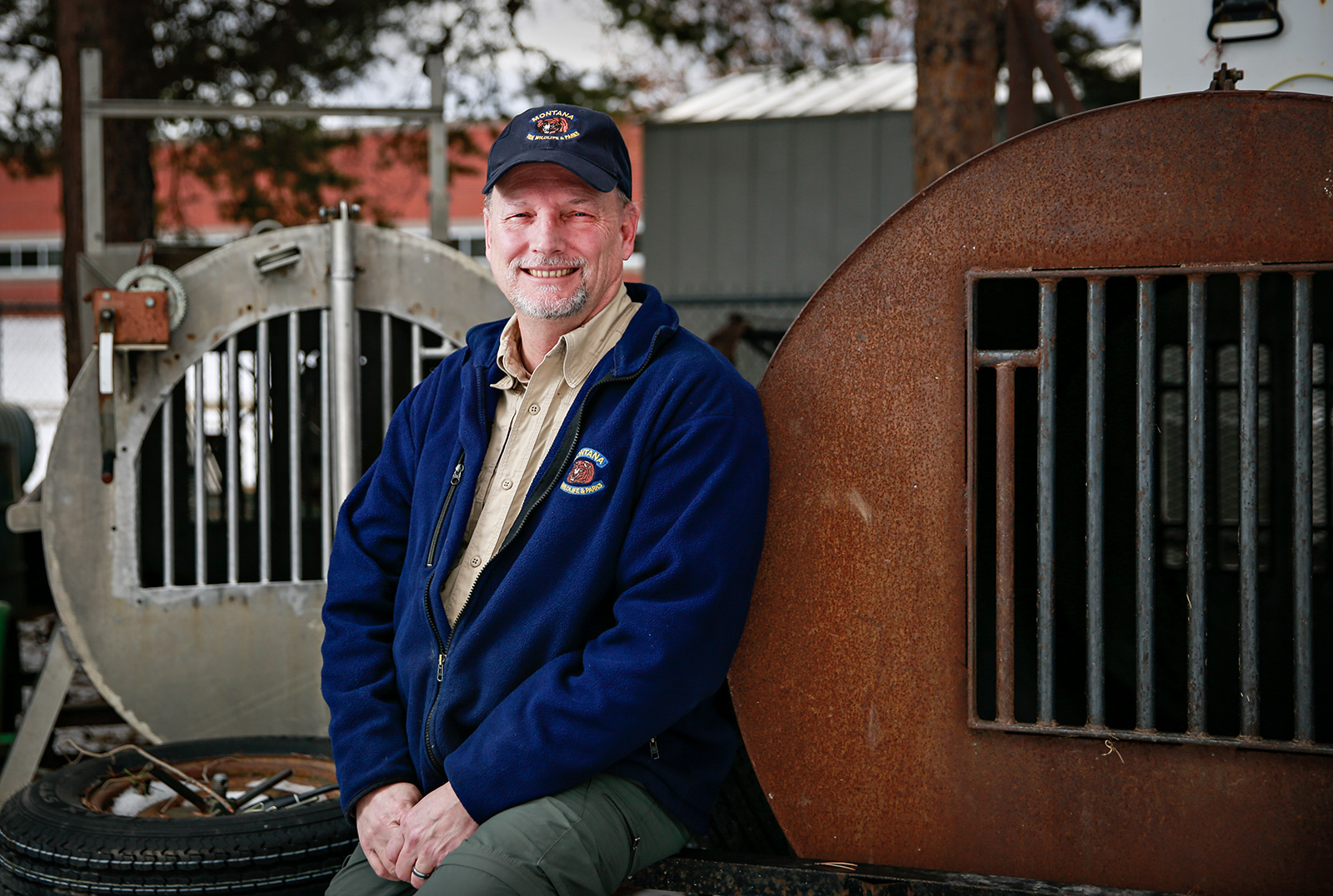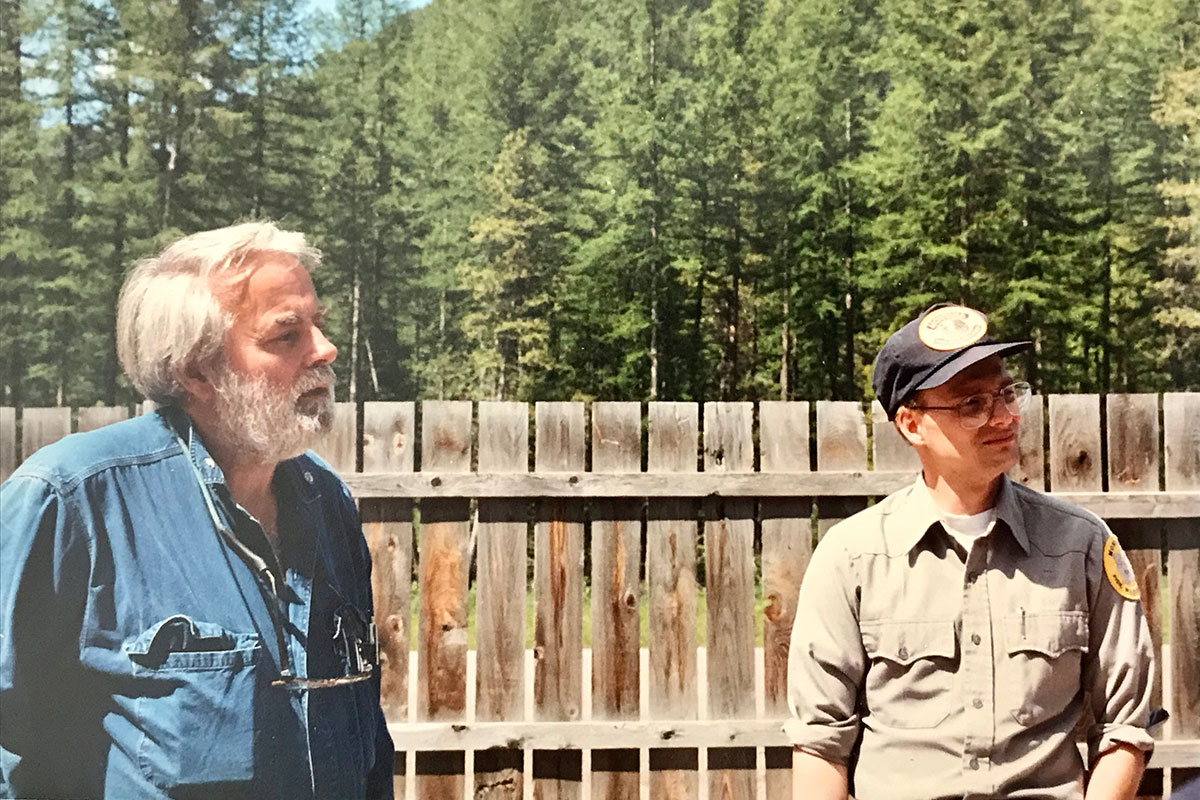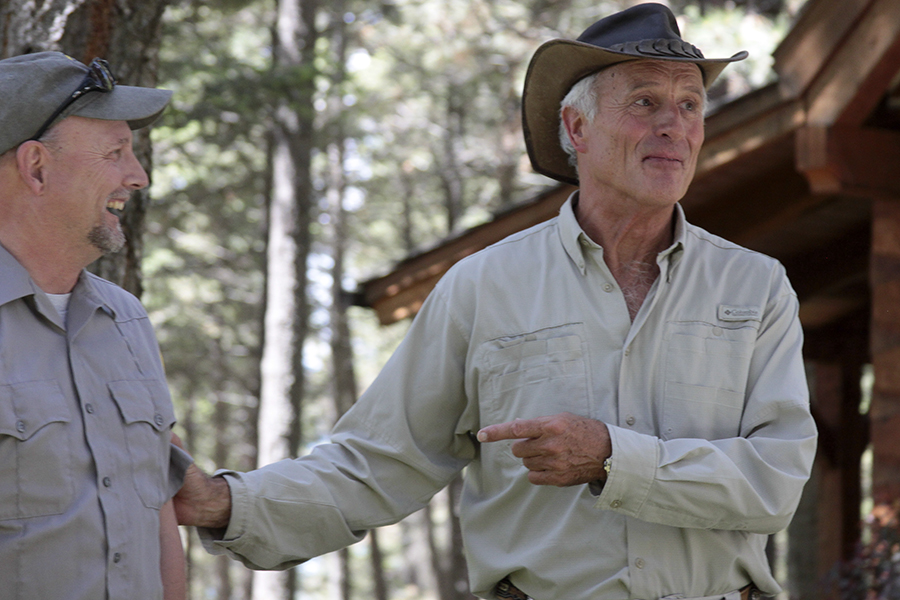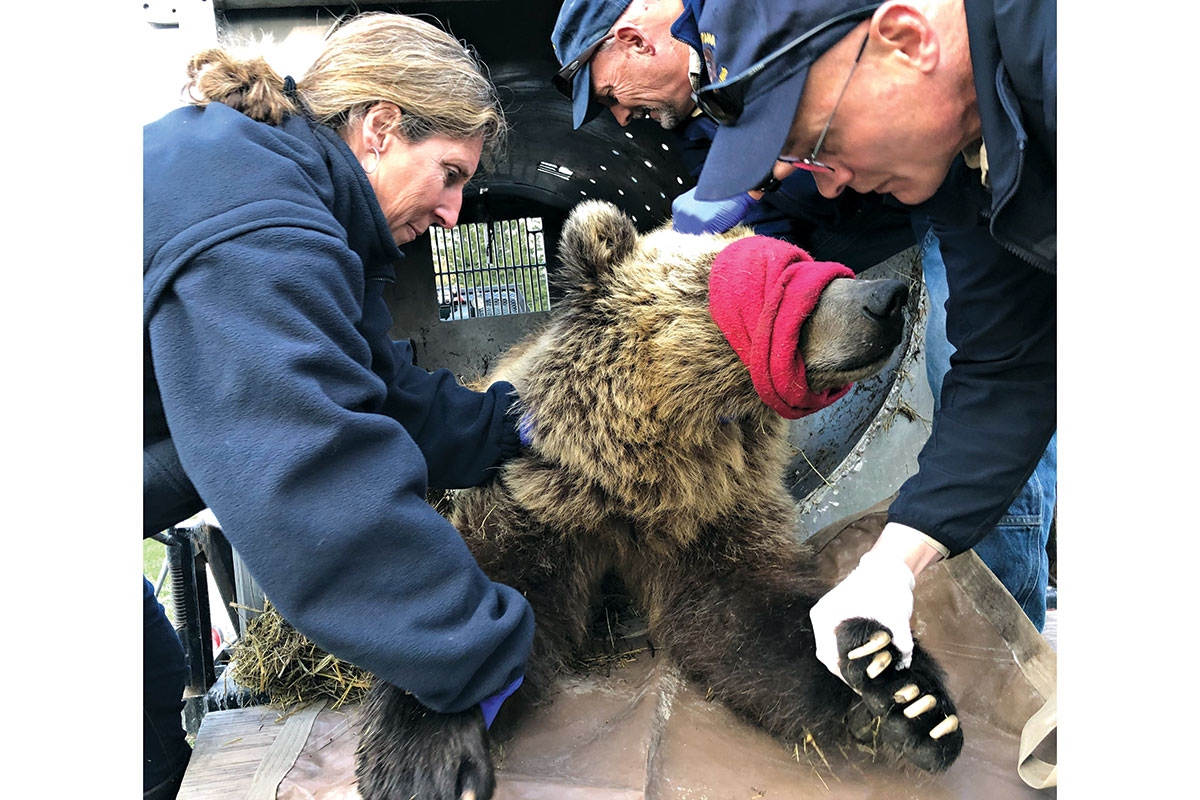Trailblazing Grizzly Conflict Specialist to Retire
After dedicating nearly four decades to grizzly bear management and conflict resolution in Northwest Montana, Tim Manley is set to retire from Montana Fish, Wildlife and Parks as more bears and people roam the landscape
By Tristan Scott
When renowned grizzly bear biologist Tim Manley began his role as Montana Fish, Wildlife and Parks’ (FWP) Grizzly Bear Management Specialist for Northwest Montana, a position he’s held since 1993, the work was funded by BNSF Railway, which faced legal mandates requiring the company to mitigate grizzly bear mortality due to its railroad operations in the region — grain spills, for example, were a lethal temptation for grizzlies browsing food sources along the Middle Fork Flathead River corridor.
Today, the human-wildlife interface is so expansive that points of conflict emerge much closer to home — quite literally in our backyards — but they’re more often the result of bird feeders, barbecue residue, chicken coops, garbage cans, and other unsecured attractants than industrial mishaps such as train derailments.
After a celebrated 37-year career with FWP, Manley recently announced his plan to retire, but it’s not for a lack of grizzly bear work to keep him busy. In fact, it’s quite the opposite, with more bears and people roaming the same landscape than ever before.
With grizzly populations in both the Northern Continental Divide and Greater Yellowstone ecosystems deemed recovered and poised for delisting, Manley’s work for the last three decades has centered on how to resolve conflicts between people and grizzlies, particularly as they both increase their respective populations and expand their presence on the landscape.

In 2020, Manley received 250 reports related to bears. Of those reports, 131 were classified as confirmed grizzly bear conflicts, with the two most common conflicts involving grizzlies killing poultry (34 reports) and grizzlies feeding on unsecured garbage (32). Bears getting into wild bird feed (11) and feed for poultry, pets, pigs, and horses were also among the reported conflicts.
Although Manley is still reviewing his data from 2021, he said it was among the busiest, with a call volume approaching 300 reports of conflicts related to bears. He documented 33 captures of 32 individual bears, nine of which had to be killed as management removals. In other words, they were creating conflicts that couldn’t be resolved.
According to Manley’s most recent grizzly bear management presentation to the Northern Continental Divide Ecosystem (NCDE) subcommittee of the Interagency Grizzly Bear Committee (IGBC), 313 individual grizzly bears have been captured 508 times under his supervision since 1993, averaging 18 captures per year. In both 2019 and 2020, Manley supervised 19 captures; in 2021, he’s overseen 33 captures to date.
“2021 was a pretty busy year,” Manley told IGBC members last week, noting that he spent a significant amount of time up the North Fork Flathead River responding to a succession of escalating incidents involving property damage and food rewards for the bears.
Those conflicts ultimately led to the difficult management decision to kill four food-conditioned grizzlies in the North Fork, including Monica, a well-known resident sow, and her three yearling cubs.
“I have said it many times before,” Manley said at the time, “killing bears is the worst part of my job. We try to avoid having to do it but when bears become very food-conditioned and start causing property damage and breaking into vehicles, trailers and cabins, those bears are removed.”

Through the years, Manley has spent an immeasurable amount of time working to educate North Fork residents and landowners on how to coexist with grizzly bears on the landscape, hauling his camper up the washboarded road and living among the resident bear and people populations for weeks on end. In many ways, the North Fork community serves as one of the best examples of how humans and grizzlies can coexist. In recent years, however, due in part to the increased visitation at Glacier National Park, whose western boundary is defined by the North Fork Flathead River, as well as the expansion of commercial services in and around the community of Polebridge — leading to the development of “employee camps” to house a growing number of seasonal workers — human-wildlife conflicts have been on the rise.
Last week, Manley’s slideshow presentation to the IGBC subcommittee included a video of Monica ripping through the side of a camper near a work camp, where she received a substantial food reward, as well as photos depicting damage to vehicles in which there was no food.
“She had gotten a big search image for vehicles by that point,” Manley said.

Another spate of bear-human conflicts occurred at a commercial compost site near Columbia Falls, where grizzly bears figured out how to trip the wires of an electric fence, but the proactive management actions there resulted in a happier outcome, Manley said. It wasn’t easy, however, and required multiple efforts to “beef up” the electric fencing. Meanwhile, remote camera footage showed the bears attempting to bypass the electrical charge by digging underneath the fence.
“We had nine different bears that were visiting that compost site, but they finally quit trying to dig underneath once we got those wires hot enough,” Manley said.
It’s a testament to the lengths Manley is willing to go to work with landowners and business owners in order to help them cohabitate on an increasingly crowded landscape.
Jim Williams, FWP’s regional supervisor in Northwest Montana, has worked with Manley throughout his entire career, and described him as “probably one of the best bear managers on the planet,” adding that Manley’s work to mentor future generations of bear biologists means his legacy will continue, which is good news for grizzly bears.
“Tim has mentored countless young bear technicians and inspired them to pursue careers in wildlife management,” Williams said. “His work ethic, working relationships and communication with everyone he has come into contact with has been outstanding.”